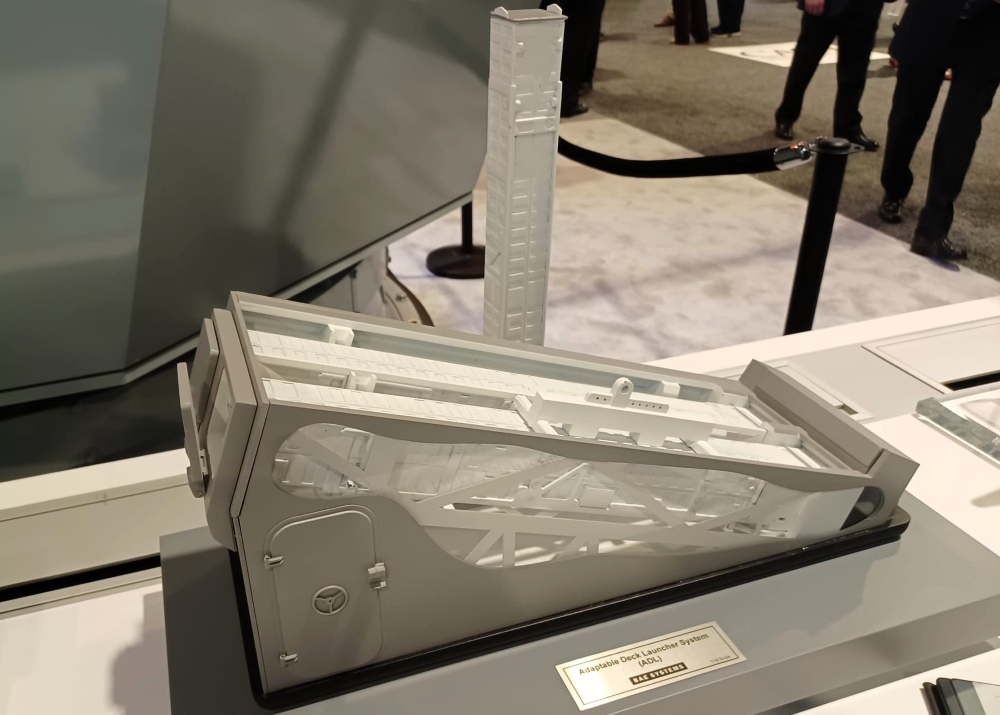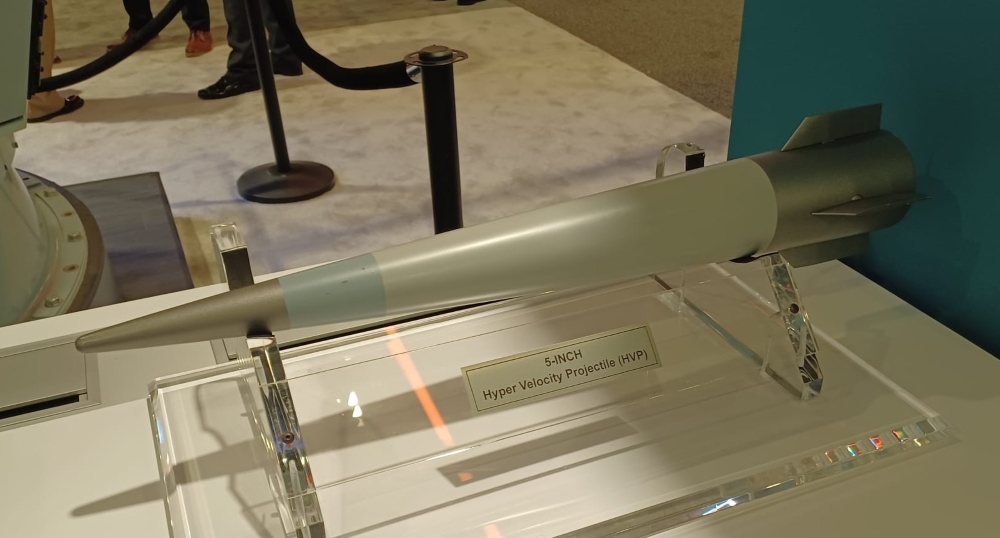
During the Sea Air Space conference and exhibition, BAE Systems has focused on three systems designed to provide naval vessels with robust firepower capabilities. Hence, the Bofors 40 Mk4 naval gun, Adaptable Deck Launching System (ADL), and Hypervelocity Projectile (HVP) represent a comprehensive approach to addressing the growing demand for versatile and potent naval armaments.
Today's navies face an increasingly complex threat environment that demands more versatile and powerful defensive and offensive capabilities. From anti-ship missiles and attack aircraft to small boat swarms and drone threats, naval vessels require multiple weapons systems that can rapidly respond to multiple threat vectors simultaneously. This shifting landscape has driven procurement priorities toward offensive capabilities, with an emphasis on strike-capable platforms equipped with long-range precision weapons.
The geopolitical tensions in regions like the Black Sea and South China Sea have further accelerated the need for naval forces to project power at greater distances while maintaining robust defensive capabilities. Labour shortages and training costs have also pushed navies toward more autonomous and efficient systems that can deliver maximum firepower with minimal crew requirements.
Adaptable Deck Launching System: fleshing out naval power
BAE Systems' Adaptable Deck Launching System is a revolutionary approach to missile deployment that addresses space constraints on naval vessels. This deck-mounted launcher features a modular design that can be customized with varying numbers of launch cells to suit different ship applications.
The ADL has been specifically developed to serve as a replacement for the legacy MK29 SEASPARROW launchers currently installed on aircraft carriers and amphibious assault ships. In March 2025, BAE Systems was awarded a $37 million contract through the US Department of Defense Ordnance Technology Consortium to design the Next Generation Evolved SeaSparrow Missile Launch System (NGELS), which leverages the ADL concept. This initiative is particularly timely as the increased weight of the ESSM Block II missiles has exceeded what the original MK29 box launchers can handle. In addition, naval vessels equipped with the ADL benefit from substantially increased missile capacity, effectively doubling their defensive capabilities by accommodating 16 missiles rather than the MK29's limit of 8 ESSMs. This expanded capacity directly translates to enhanced combat endurance and the ability to counter multiple simultaneous threats.
The system extends its compatibility to the backbone of the surface fleet with integration paths for ARLEIGH BURKE-class Guided Missile Destroyers (DDG 51 Class) and TICONDEROGA-class Guided Missile Cruisers (CG 47 Class). Beyond these established platforms, the ADL offers compelling defensive enhancements for smaller vessels including the Littoral Combat Ships, the new CONSTELLATION-class frigates (FFG(X)), and various other naval vessels that would benefit from advanced missile defence capabilities without requiring extensive structural modifications or dedicated missile silos.
Available in both Tactical Length and Strike Length configurations, the ADL can accommodate a variety of missiles for air defence, ballistic missile defence, surface strike, anti-ship, and anti-submarine warfare missions. The system is fully compatible with missile canisters used in the Mk 41 Vertical Launching System, providing navies with a flexible solution that can be integrated across multiple platforms. The ADL's low-profile design reduces radar signature while its protective enclosure option decreases maintenance requirements and protects the encased missiles. Its reloadable nature extends its utility over multiple engagements, making it an ideal solution for navies seeking to enhance their vessels' offensive and defensive capabilities without major structural modifications. In fact, current operations in the Red Sea demonstrated that saturation attacks can quickly empty vertical launch systems, while solutions to reload them at sea remain limited. The ADL’s large top hatch allows for quick and safe reload, virtually everywhere, including at sea.

Hypervelocity Projectile: next-generation precision strike
BAE Systems' Hypervelocity Projectile is an aerodynamic munition designed for exceptional speed and accuracy. This 5-inch projectile represents a significant advancement in naval gunnery, capable of engaging multiple target types including anti-ship cruise missiles and aerial drones. Originally developed for the US Navy's electromagnetic railgun program, the HVP has found new applications with conventional gun systems, including the Navy's MK-45 5-inch gun and various 155mm artillery platforms. Its low-drag design enables high velocity, manoeuvrability, and decreased time-to-target, with a range of approximately 80 km when fired from 155mm tube artillery. The HVP's tungsten nose cone allows it to withstand the extreme temperatures generated at hypersonic speeds, while its precision guidance system ensures accurate targeting even against moving threats. Recent Navy and Army experimentation efforts, including the Major Caliber Anti-Drone Air Program (MADCAP), suggest a promising future for this versatile munition.
Bofors 40 Mk4: lightning-quick response in a compact package
The latest edition of the immortal 40 mm gun comes as a remotely operated weapon featuring a sleek, compact design optimized for installation on various naval platforms. Its low weight and modest dimensions belie its rate of fire of 300 rounds per minute and a maximum range of 12,500 m. The system employs programmable 3P (Pre-fragmented, Programmable, Proximity-fused) ammunition that can be optimized for specific targets, including airburst patterns for threats previously difficult to engage. This versatility makes it equally effective in peacekeeping operations, law enforcement missions, and full-scale combat scenarios. The gun's computer-controlled burst patterns and on-mount muzzle velocity radar ensure exceptional accuracy, while its electric drive system and modular architecture facilitate straightforward integration across different naval platforms.

Future applications: unmanned platforms and beyond
As autonomous systems continue to gain prominence in naval operations, the potential integration of these weapons systems on large, unmanned vessels presents intriguing possibilities. BAE Systems is working on palletized versions of both the Bofors 40 MK4 gun and the ADL System. Both could theoretically be mounted on large naval drones, providing them with significant defensive and offensive capabilities while maintaining their unmanned nature. From what FW MAG could understand, programmes such as US Navy’s LUSV or Naval Group’s SEAQUEST L envision low-cost, high-endurance, reconfigurable ships capable of carrying various modular payloads, particularly focused on anti-surface warfare and strike capabilities. In other words, the next generation of Fast-Attack Crafts and attack corvettes might be unmanned or lightly manned, thus triggering appetite for these classes of vessels. In principle, unmanned LUSVs can be constructed relatively quickly by efficient shipyards and would offer substantially increased firepower through containerized or vertical launch systems. The total firepower of a frigate or a DDG plus its accompanying drones would be multiplied according to the number of weapons containers or launch silos installed on the drones. As a consequence, these perspectives nurture the demand of medium calibre naval guns and modular, scalable solutions for missile launch.








.png)
